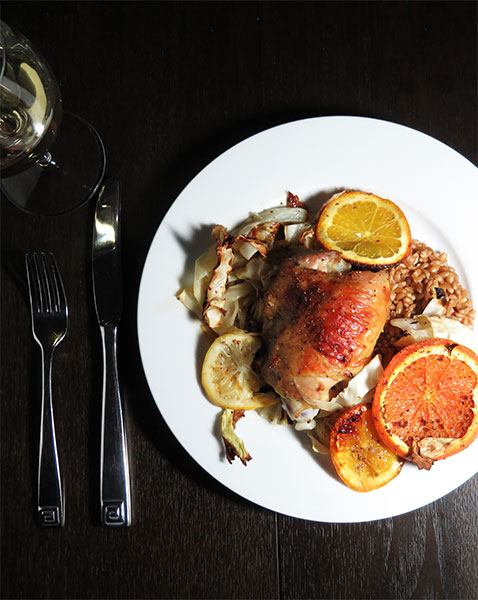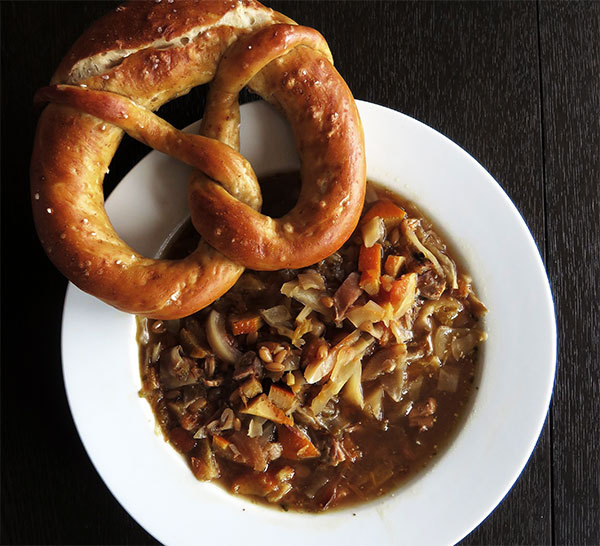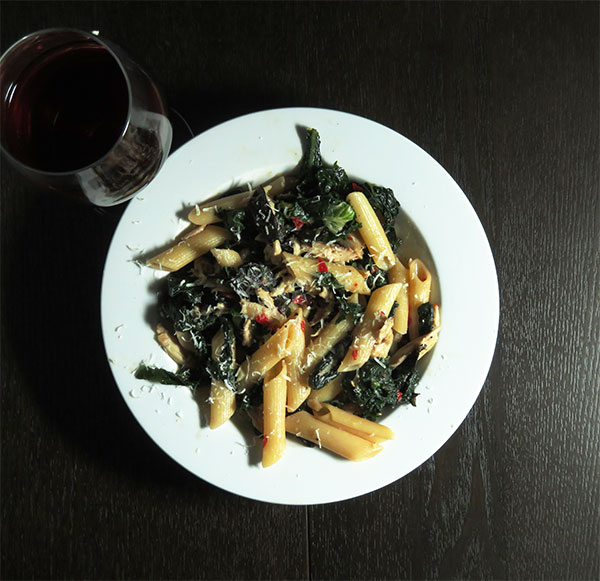Let’s jump right in with a quick tip for a healthy diet. Replace some (or all) of your meat-based proteins with plant-based ones. I’m focusing on chicken here because of it’s growing popularity. It’s also an easy place to start. There’s only one “cut” of chicken you need. It’s not a cut at all, in fact. Whole chickens are all you should ever buy.
Why buy a whole chicken instead of chicken parts? Or rather than (cringe) skinless, boneless chicken breasts? There are many reasons—flexibility and economy among them—but outweighing them all is quality. Good luck buying quality chicken breasts with the bone and skin removed.
Eating the healthiest chickens you can AND consuming more plant-based proteins is simple.
First Step: I’m Not Talking About Just Any Chicken Here
What do I mean by quality? Pastured poultry raised by farmers—not factories. Meat you can feel good about eating for all the following reasons:
- The chicken had a good life (i.e. access to space, air, daylight, grass, and bugs).
- The chicken was slaughtered humanely (i.e. processed on the farm where it was raised).
- The farmer can make a livable wage off what you are paying him or her for the privilege of eating meat.
- The farm workers are not subjected to the horrors of employment in factory farms.
Don’t be lazy. A chicken from a store touting organic foods is not the same thing as chicken from a small farm. Grocery stores need dependable supplies. Too often that need eliminates the small farms that can provide quality chicken. Also, buying “organic” isn’t the quick and easy solution. Organic does not regulate animal welfare standards. Thus, organic poultry is usually slaughtered in the same facilities as conventionally-raised birds.
To be fair, there’s a certain amount of trust that goes into any food purchase. But it’s a lot easier to trust a farmer you can talk to one on one. Why would you believe the four corporations controlling over half the poultry production in the US?
Second Step: The Basic Roast Chicken Dinner
Buying whole chickens does not mean you have to cook whole chickens.

I had made the recipe as written before and knew it was a delicious combination. The anise flavors from the fennel and liqueur combine with citrus for a unique take on roast chicken. I have since learned that cabbage goes with almost everything. Anise is surprising versatile as well. So in need of packable leftovers for a weekend away, I made this dinner the night before we left. The chicken and vegetables took up two half-sheet pans.
Besides the interesting flavors, there’s another reason to include the fruits and veggies. Without them, you might eat half a chicken for dinner. It’s such a simple rule to follow: If you’re trying to eat less meat, add more vegetables to the plate. We like the dark meat and always eat a leg or thigh. That’s one piece of chicken plus a whole lot of plant foods.
So could you make this same dish without cutting up the chicken? Yes, of course. Just cook it longer—about an hour. And read this for a few more tips. Actually, I recommend roasting a whole chicken at least the first time you buy one. Then try cutting it into eight parts (2 breasts, 2 thighs, 2 legs, and 2 wings) after it’s cooked. You’ll feel less intimidated practicing on a cooked chicken before you try a raw one.
The basic method for sheet pan cooking is this:
-
Cut up fruits and vegetables. You can cut into whatever shapes you prefer—wedges or slices are common. But think about the cooking time. Don’t cut anything too small because it will be cooking for 30–45 minutes with the chicken.
-
If you bought a whole chicken, cut it up. Always roast chicken on the bone and with the skin on for best flavor.
-
Rub chicken pieces with olive oil, salt and pepper. Or pour a sauce over the chicken instead. In this case, I stirred in Pernod, whole-grain mustard, dried thyme and fennel seeds to the olive oil.
-
You can leave the chicken pieces to marinate in the sauce if you prefer. Make sure to refrigerate it. If you want, add the cut fruits and vegetables to the marinade as well.
-
Layer everything together on one or two sheet pans with the chicken skin facing up. Crowding the ingredients together is okay as long as they are in a single layer. If using, pour any marinade remaining in the bowl over the chicken.
-
Roast in a preheated oven at 450–500 degrees. Rotate each pan and, if using two pans, swap them half way through for even cooking.
-
Chicken is done when the juices run clear (try pressing on a thigh with the back of a fork). White meat cooks faster so check it first. When in doubt, cut into the meat to see–no one will notice once it’s served. Also, consider your tolerance level. I prefer overcooked chicken to undercooked, so I error on the side of leaving it in the oven too long. (I do the same with baked goods, by the way, but the opposite with fish and beef.)
-
Remove the cooked chicken, fruits and vegetables from the pan. If there is liquid leftover, pour it into a saucepan to make a sauce for the chicken. Reduce it over high heat until it’s the thickness you want. Or save the liquid to add to soup. Whatever you do, don’t throw it out! To remove anything stuck on the pan, add a little water while the pan is still hot and scrap it with a wooden spoon. This is deglazing. Add to your sauce or save for soup.
Incidentally, you can follow this same method to roast mixed vegetables. Feel free to cut into smaller pieces if you want them to cook faster. I usually don’t marinate vegetables—instead, toss with olive oil, salt and pepper. Sometimes, I add a spice or dried herb. When I don’t know how long a mix of vegetables will take to cook, I place each variety on different parts of the pan. That way, I can remove the ones that are done sooner. Fortunately, roasted vegetables are good hot or at room temperature (and cold!). So there’s no need to worry about the timing.
To adapt this method for a whole chicken, make the following minor changes:
-
Use a pan with higher sides—a roasting pan is ideal—and set the oven rack in the lower third of the oven.
-
Place the chicken with the breast side up. (Never bought a whole bird before? Always check the inside for giblets and remove them before cooking.)
-
Arrange the cut fruits and vegetables in the bottom of the pan around the chicken. With the longer cooking time, you may want to add these after the chicken has been in the oven for 10 or 15 minutes.
Third Step: What to Do With All Those Leftovers
What’s the problem here? Leftovers are why we make roast chicken in the first place.
Recall, we only ate two pieces of dark meat for dinner. This left us with two breast pieces (also called two halves), two wings, one thigh and one leg. Oh, and a chicken carcass … we’ll get to that later.
I like to use the breast meat for sandwiches because it slices the easiest. We had three days of cross-country skiing ahead of us. Chicken sandwiches made with baguette bread were quick, packable lunches. You can add all sorts of toppings, but I kept it simple with a little mayonnaise and a lot of mustard.
After spending the days outside in the cold, we were tired. So transforming the leftovers into a warm soup was obvious. First, I picked the rest of the dark meat off the bones. Then, I chopped up the other ingredients into bite-size pieces and threw it all into the pot. Even though everything was pre-cooked, I gave the soup time to simmer on low. Don’t rush soup because a little extra time on the stove improves the flavor. Time is also why soups are better the next day. Remember to salt and taste before serving.

Returning home after a long weekend away, another easy dinner was in order. With only two wing pieces left from my roast chicken dinner, I didn’t expect to have so much meat for this meal. The wings added flavor and protein to this pasta made with pantry and freezer staples.

Fourth Step: The Scraps
So what about that chicken carcass? And all those bones from the chicken pieces. (I know you didn’t assume I threw them in the trash.)
Yes, it’s time for chicken stock. Now before you groan … I am aware this sounds like “project” cooking. But give me the benefit of the doubt when I say stock is really easy. It takes time. But that’s the only problem.
Unfortunately, blog posts take time too so I’m still working on it. But coming soon, I’ll have a new post (and with any luck, a video) that’s all about stocks and broths. In the meantime, throw those scraps in the freezer and stay tuned. I’d also recommend updating your pantry list in kitchenlister. You don’t want to forget those poultry bones are in there.
But This All Sounds Too Expensive (Said in a Whiny Voice)
My frozen pastured chicken from the farmers market cost $6.50/lb. Split over 6+ meals (excluding the stock), that comes out to about $2.70/serving of chicken. Even split over many meals, you can’t afford $30 for one chicken every week? Me neither.
Stay with me here for a little chicken–and–bean math.
Compare for a two-month period:
- 5-lb, free-range chicken/wk at $10 each = $80 for two months
With:
- One 5-lb, pastured chicken for $30 = $30 for two months AND
- 16-25 lbs of organic, dried legumes (such as Great Northern, black, or pinto beans, split peas, red or green lentils, and chickpeas) at $2-3/lb = $50 for two months
There are about 230 grams of protein in a whole chicken. Most legumes average around 15 grams of protein per cup when cooked. Also, 1 lb of dried legumes = 2 cups dried = 6 cups cooked. Our $50 worth of dried legumes would provide approximately 225 grams of protein per week.* That number is an average, but in any case, it’s roughly the protein in our weekly chicken.
You may even save money to get an equal amount of protein. For those of you worried about “complete” proteins, use the extra cash to buy rice and quinoa. Or how about some fresh vegetables? Because more veggies are almost always the answer to questions about nutrition. And this analysis doesn’t even account for the variety of nutrients you get from the mix of legumes.
More vegetables, less chicken. That’s something we should be doing anyway. Both for our own health and the health of the environment. The amount of meat consumed worldwide is unsustainable. This is true no matter how it’s raised, so the obvious solution is to consume less of it.
Wait, what’s that? You don’t want to eat legumes. And chicken is your fav. Well, that’s different then. Don’t let me stop you from enjoying your $5 chickens. Just don’t call me the privileged one.
Whoa, I’m Cool With Legumes. But How The Hell Do You Cook Them?
Oh, just wait. It’s even easier than the chicken stock. Post coming soon … then you’ll have no excuses.
*The 225 grams/week is calculated as 20 lbs of dried legumes x 2 cups dried/lb x 3 cups cooked/dried x 15 grams protein/cup cooked divided by 8 weeks. For $50 worth of organic dried legumes, the protein content ranges from approximately 1440–2250 grams of protein, depending on the type. This equates to 180–280 grams/week.
MAKE AN ENDLESS VARIETY OF EASY AND NUTRITIOUS MEALS WITH KITCHENLISTER. START A FREE ACCOUNT NOW.
If you’d like more information about any of these healthy chicken dishes, leave me a comment.
The chicken dinners detailed in this post were part of my Week in Review meals for March 6–22, 2017.
